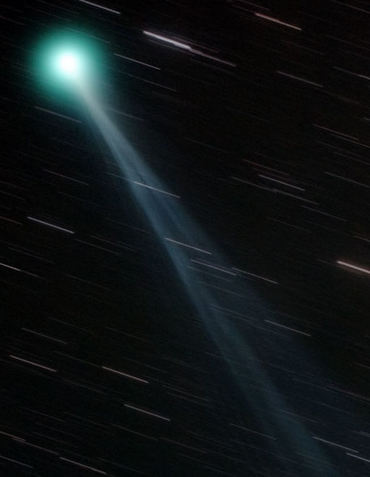The comet is now slightly closer to the sun than Earth. Solar heating has turned it into a binocular object (magnitude +5.5 to +6) barely visible to the human eye, but dazzling through backyard telescopes, as shown in Hart's photo above.
Comet Lemmon's verdant color comes from two of the gases boiling off its nucleus: cyanogen (CN: a poisonous gas found in many comets) and diatomic carbon (C2). Both substances glow green when illuminated by sunlight in the near-vacuum of space.
The combination of its colorful atmosphere and filamentary tail make this comet visually striking. Ultimately, Comet Pan-STARRS and especially Comet ISON could surpass it, but for now the most beautiful comet in the solar system appears to be a green Lemmon. More about Comet Lemmon: 3D orbit, ephemeris, light curves. www.spaceweather.com

 RSS Feed
RSS Feed